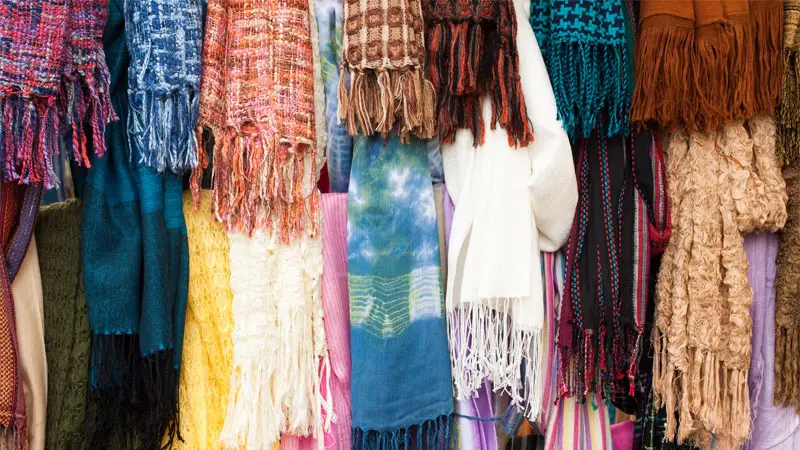There is a wide variety of coverings that have been invented over the years, and the differences can be quite confusing for the average person. Today, we’re going to be looking at two of the most popular: shawls and wraps.
A shawl is a large piece of clothing that’s most commonly square or rectangular (although triangular ones exist) that is worn loosely about the shoulders and upper body, sometimes also covering the head.
They’re traditionally used both to provide extra warmth or comfort and as a form of modesty, such as covering bare shoulders at a formal event. While similar, scarves are smaller and tend to be worn more casually than shawls.
Meanwhile, wraps are exactly as they sound – a piece of fabric wrapped around the upper and/or lower body. Wraps can be worn as regular clothing, as a decorative accessory, or for added warmth.
Related: 13 Types of Robes
Types of Shawls and Wraps
1. Bhujodi Shawl
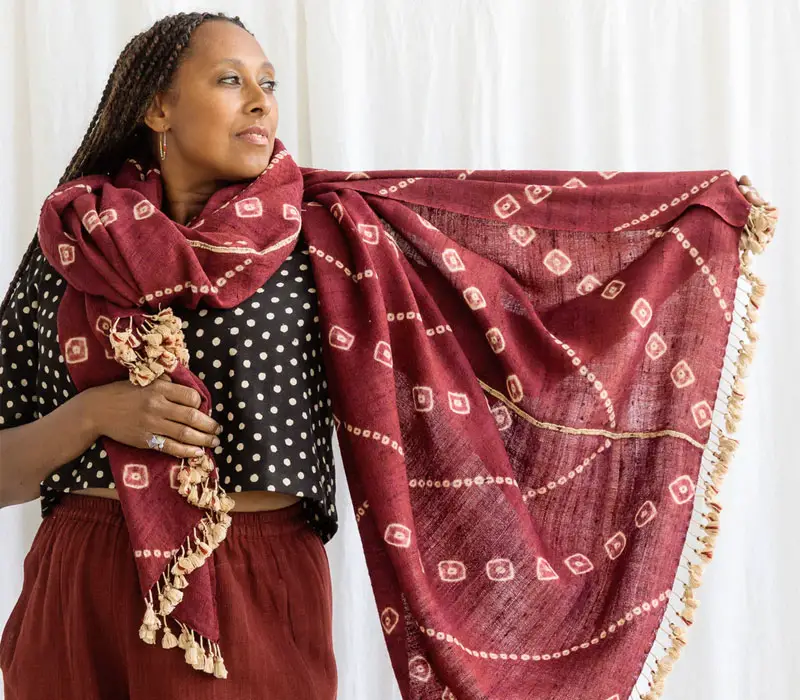
These Indian shawls originated with the Marwada weavers of Rajasthan, but are better known as a Gujarat staple for more than 500 years.
A bhujodi shawl keeps the wearer warm in the winter but can also be worn loosely in the summer to keep them cool. In most cases, these shawls feature geometric designs or patterns arranged aesthetically.
2. Faroese Shawl
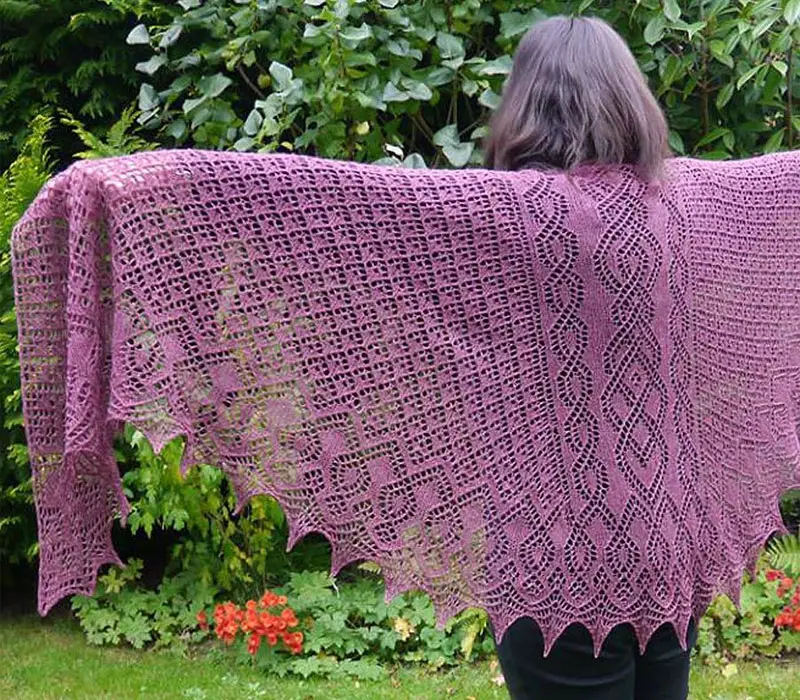
This type of knitted shawl is quite unusual. Unlike most knitted shawls, it’s crafted from the bottom up and has a distinctive butterfly shape. The middle of its back has a gusset.
3. Himroo Shawl
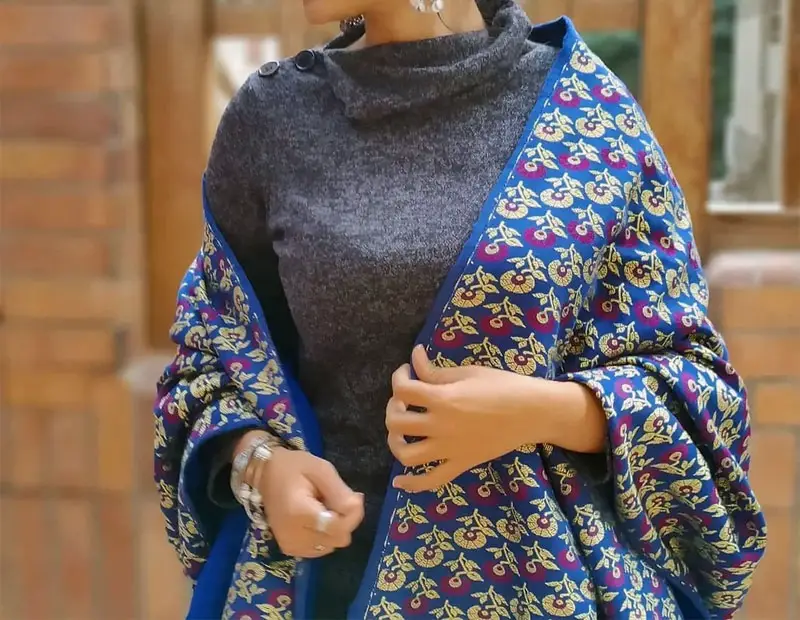
Based on the Persian Kinkhwab weave, these shawls can be found in Aurangabad and Hyderabad, but are slowly becoming less common. They’re made from silk and cotton, giving them the feel of silk with the warmth of cotton.
Having been based off of garments meant for Persian royalty, these incredible shawls retain Persian-themed designs and have jewel tones which give them a glossy, almost glazed finish.
4. Kapadaganda Shawl
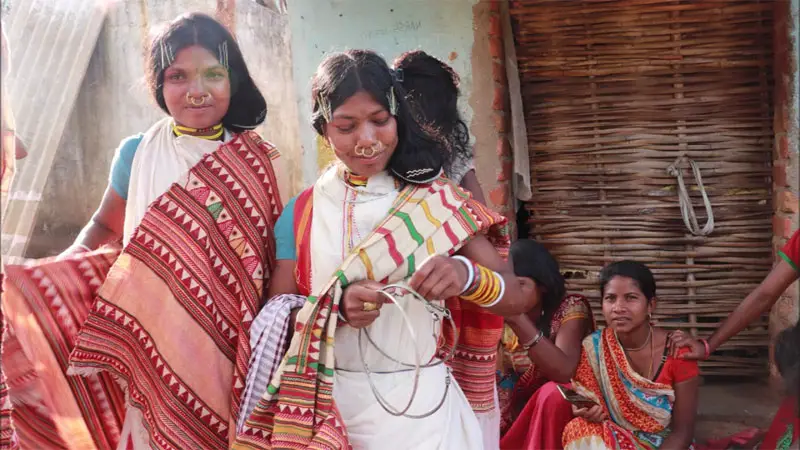
Sometimes an elite article of clothing becomes far more commonplace, as is the case with Odisha’s Dongria Kondh tribe’s kapadaganda shawl.
These shawls are made by hand using a coarse white fabric created by a neighboring community and were originally only given as gifts to elders within the tribe or (on occasion) made for oneself. The garment features the colors brown, green, red, and yellow to symbolize the tribe’s four major values.
5. Kalamkari Shawl
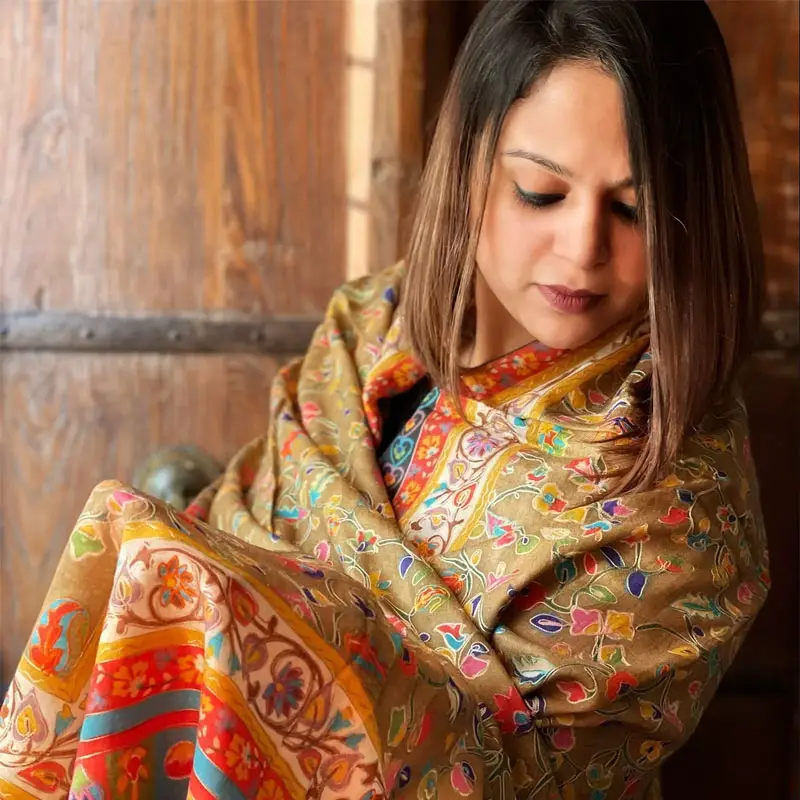
These cotton shawls hail from Andhra Pradesh and are generally printed either by hand or via block printing. The designs are either in the Machipatnam or Srikalahasti style using rich, natural colors and religious patterns.
The fabric is handmade and imperfections are generally considered to be part of the final beauty.
6. Kashmir Shawl
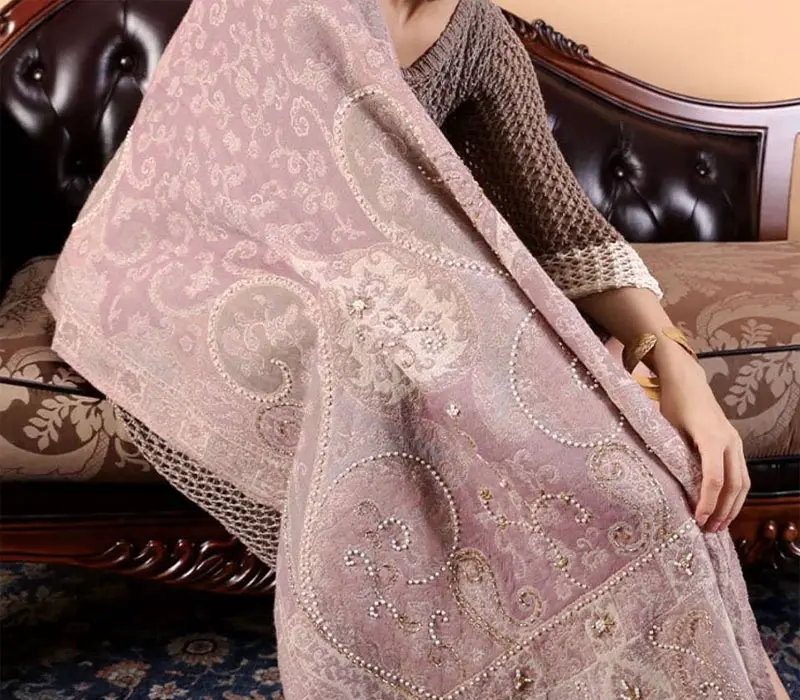
Despite the name, Kashmir shawls are made of either cashmere wool or shahtoosh wool. Kashmir made its way into Europe during the late 1700s and quickly became popular among the aristocracy.
Kashmir shawls were famously worn by both Empress Josephine and Queen Victoria. Nowadays, you don’t have to be among the elite to own a Kashmir shawl. Their lighter weight, warmth, and unique weave continue to make them quite the statement for both fashion and function.
7. Kilt

While the word kilt might conjure up images of Scotland, they’ve existed since ancient times and were been worn throughout Europe. This particular type of wrap is worn around the waist and traditionally fastened with a belt, sporran, or other type of fastening. Modern Scottish kilts may include pockets or other features and are heavily pleated.
A variation of the kilt, known as a great kilt or tartan belted plaids, also exists. Unlike a regular kilt, these much larger versions are worn over the shoulder and around the waist, tied by a belt.
They were especially popular among soldiers, as the term “plaide” in Scottish means blanket, and the belted plaid was regularly used to cover up at night.
8. Knit Shawl
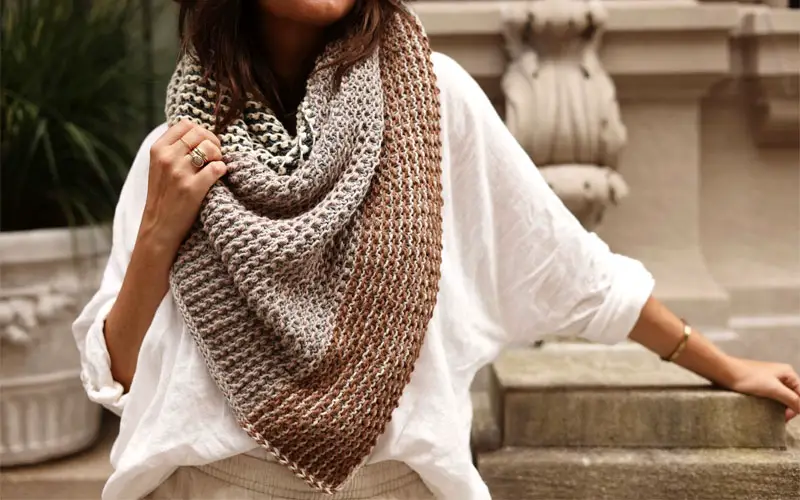
This shawl is knitted from the neck down, with a generally triangular shape. They’re quite common worldwide and may be either formal or informal in nature.
9. Kullu Shawl
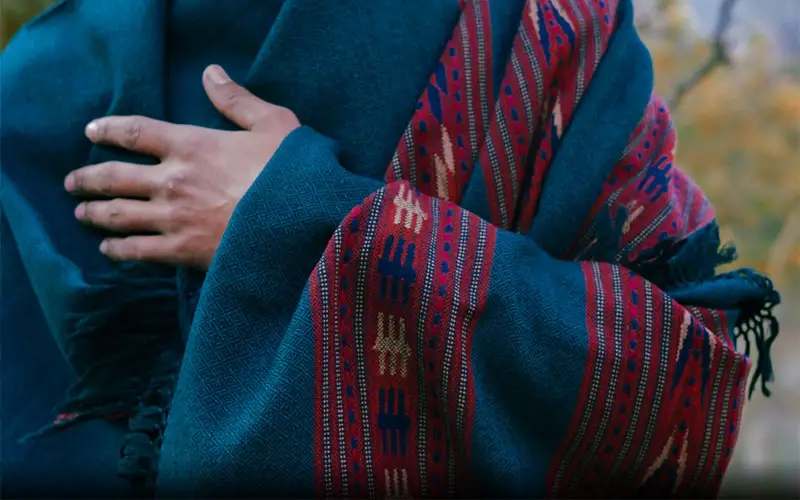
Made from several types of wool, these shawls from Himachi Pradesh often have unique textures when more than one type of wool is combined. They were originally plain, but now tend to include geometric patterns.
While worn by both men and women, men in this region also wear pattu shawls.
10. Naga Shawl
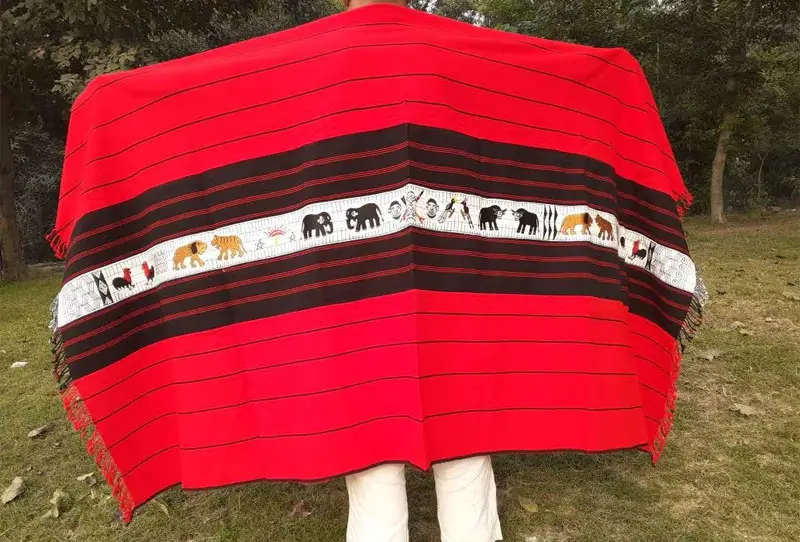
Hailing from Nagaland in India, these distinctive black and maroon shawls are usually made of wool and tend to have patterns of red, white, and yellow. In some cases, the designs represent people or animals, while in other cases, the designs are more abstract.
Today, you can find them throughout much of Northern India, where they have evolved subtle variations from one community to the next.
11. Nakshi Kantha Shawl
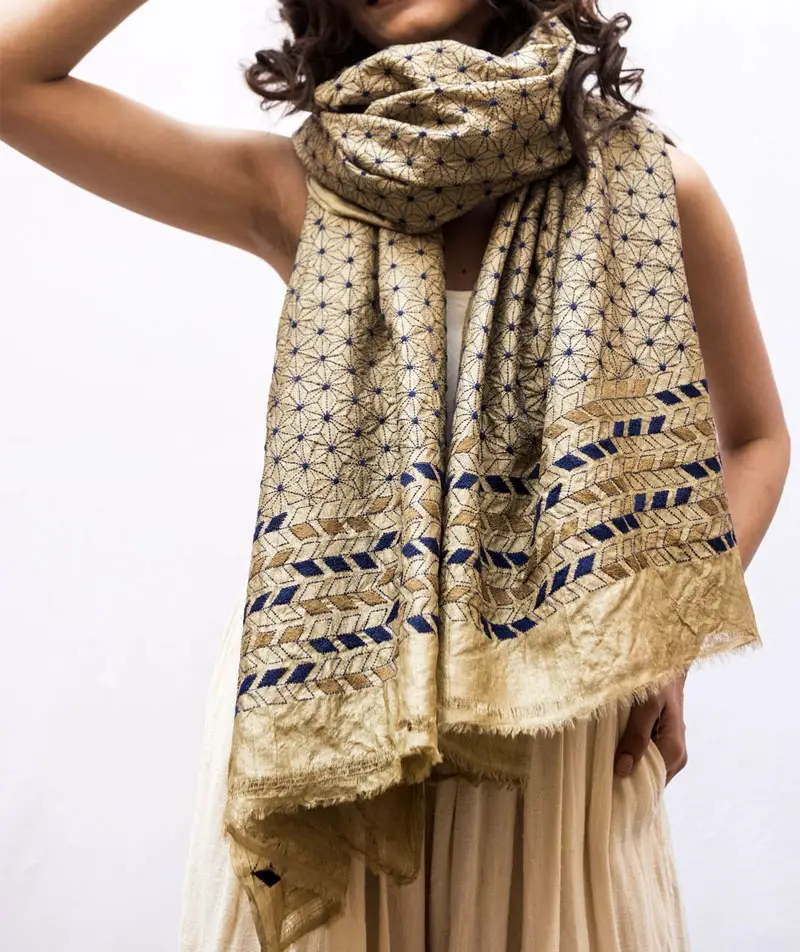
Compared to most cultures on the Indian Subcontinent, the Bengali tend to stand out as being highly artistic. This is true of the Bengali living in what is now the easternmost portion of India, known as West Bengal.
For centuries, they have been creating the intricately embroidered nakshi kantha. The term more broadly refers to a practice of quilting rags into blankets or garments, then adding patterns through needlework.
However, nakshi kantha shawls have become a popular commercial product in recent years and make for a wonderful fashion statement.
12. Obi
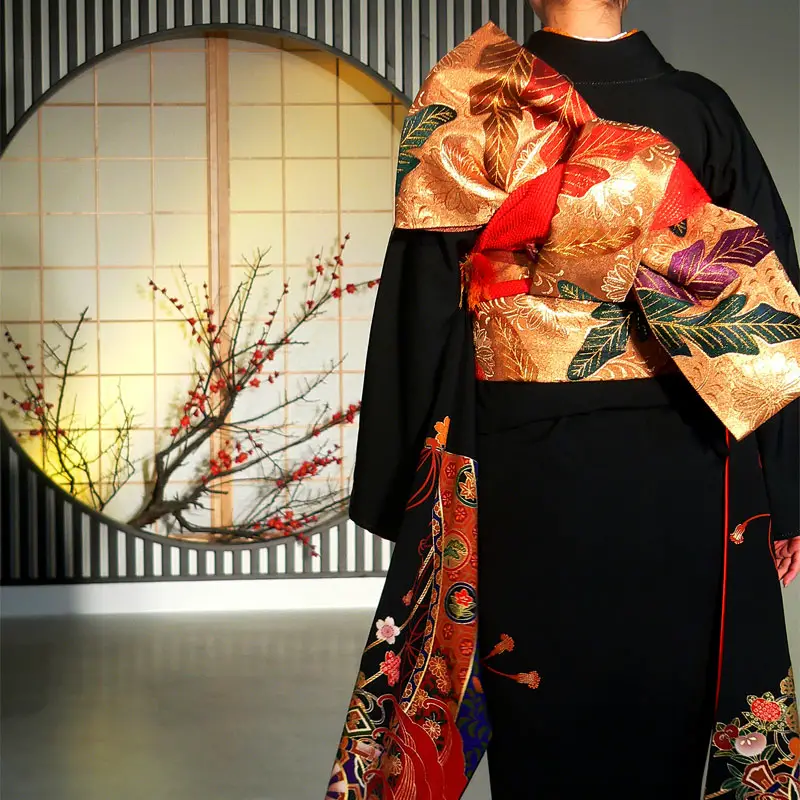
This small wrap functions as a belt in traditional Japanese dress. However, these stiff wraps tend to cover the actual ties that hold a kimono together.
The obi is tied at the back of the outfit in various ways and can be purchased in several different materials. While a used obi is relatively cheap, new ones may cost more than the rest of the kimono pieces combined.
13. Pāreu
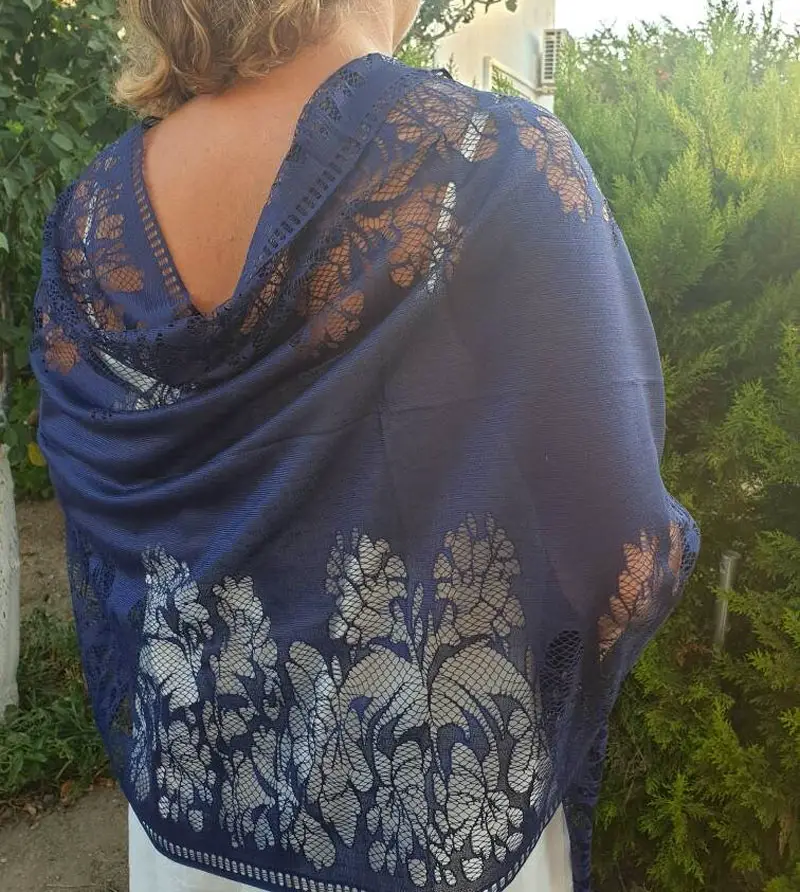
These colorful wraps were originally only worn by women but are now considered unisex. The term can refer to any form of wrap native to Tahiti and neighboring Pacific Isles, although it’s more traditionally a type or wrap skirt.
Modern pāreu are often worn by women to cover the breasts down to the knees, while men prefer to wear it as either a short or long skirt.
Read Also: Different Types of Ponchos
14. Pashmina Shawl
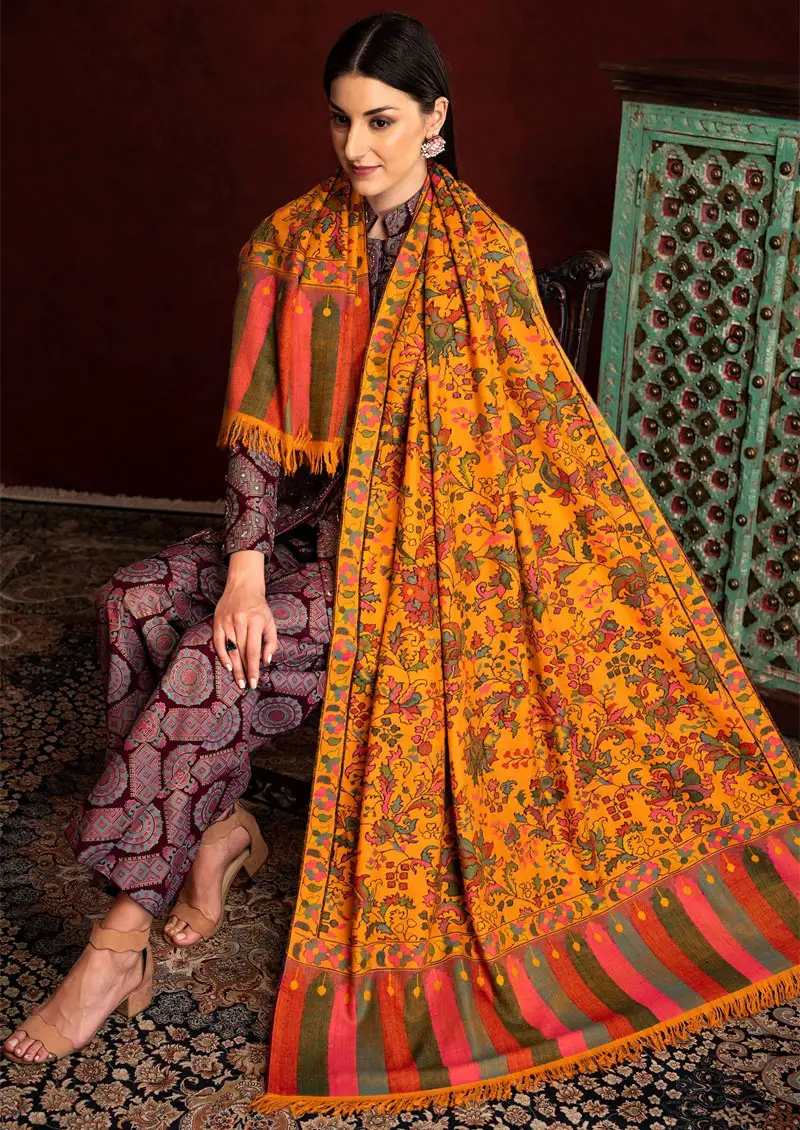
Native to Kashmir, you’ll find plenty of imitations out there, but there’s nothing like the real thing. These shawls are made from pashmina and are both lighter and softer than Kashmir shawls.
They’re quite warm and tend to have floral motifs created through traditional weaving methods. Despite pashmina being derived from the same cashmere wool, they’re arguably even more elegant than Kashmir shawls while still being affordable.
15. Pattu Shawl (AKA Loi)
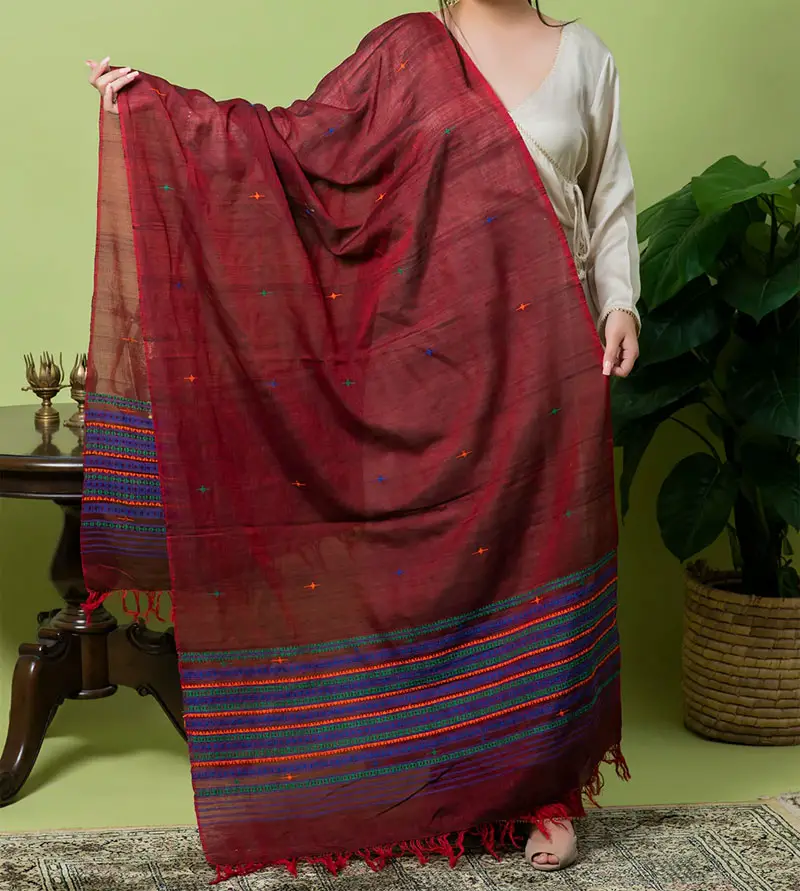
These Himalayan shawls are extremely popular exports and are made either from Deshkar or Byangi sheep wool or Anfora rabbit wool. They retain their natural wool shades, with patterns depicting geometric or floral patterns related to local tradition and religion.
16. Plunged-Neck Wrap Dress
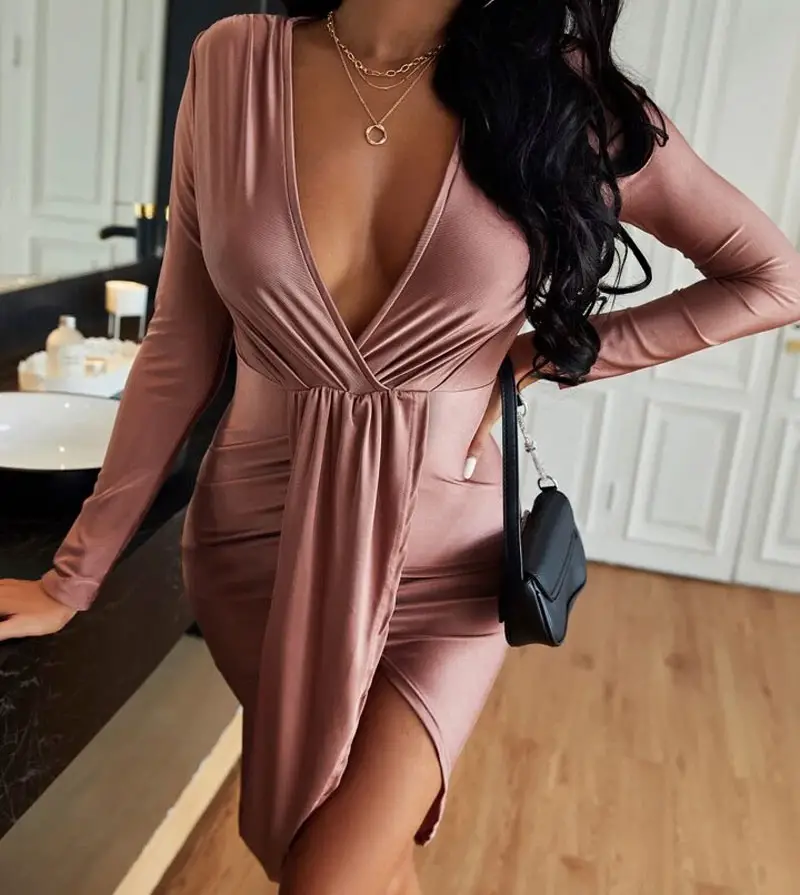
Wrap dresses are extremely popular, and those with a plunging neckline tend to be considered some of the most seductive. The dress’s neckline exposes just enough cleavage to catch the eye without being too revealing.
This kind of wrap dress is perfect for when you want to add a little romance to the evening.
See Also: Different Types of Bras
17. Sari
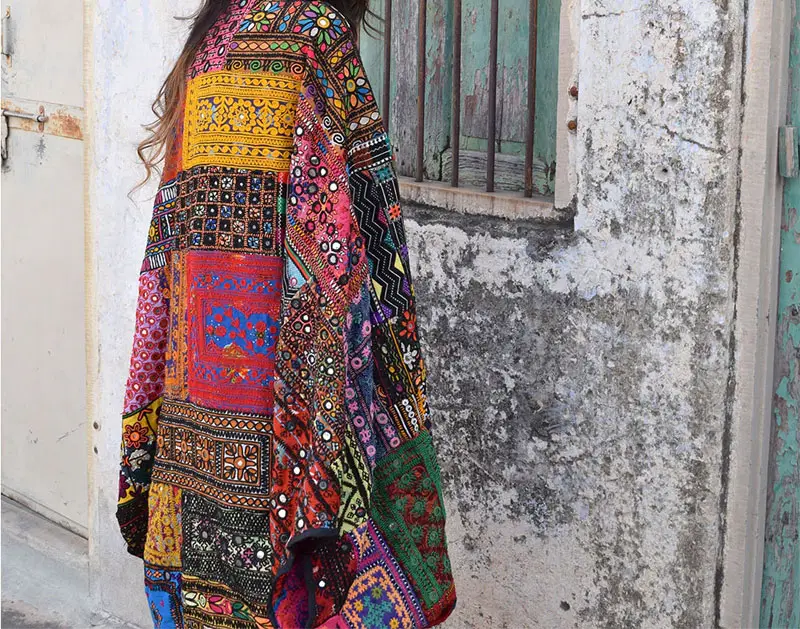
Of all the different wraps out there, the sari is perhaps the most famous. It consists of a single piece of unstitched fabric and is most commonly attached at the waist with the loose end draped over the shoulder almost like a shawl. The sari is often worn with a bodice or other clothing and may or may not expose part of the midriff.
Sari cloth is often used in Bangladesh or India to filter contaminated water. Over 100 different ways to wear a sari have been recorded. If that wasn’t enough, sari cloth comes in dozens of different styles that can vary from one region to another.
18. Stole
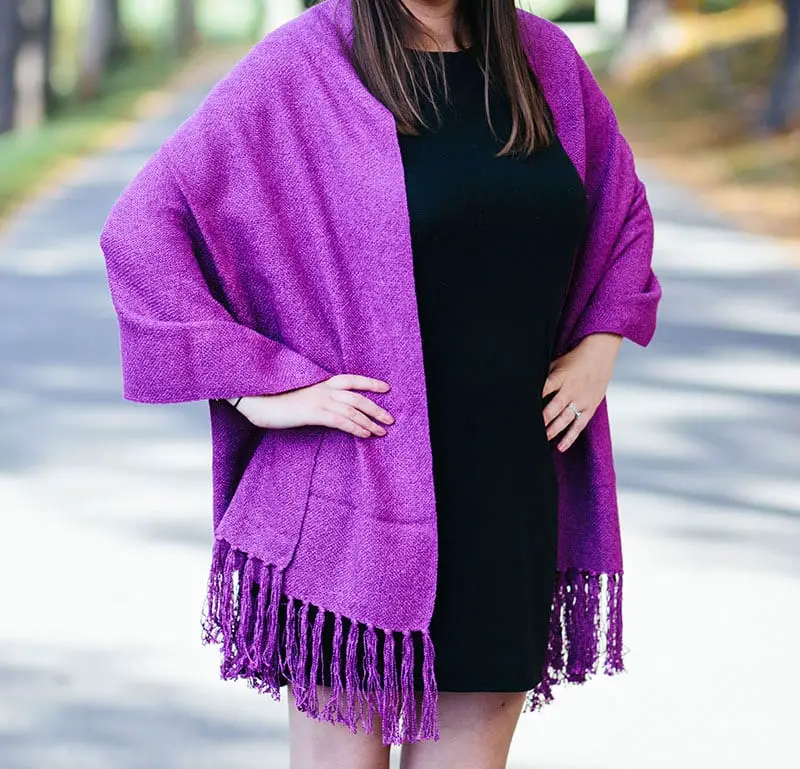
Stoles are technically a type of shawl. However, they’re often considered to be their own thing due to their elongated shape. Stoles are almost exclusively meant for formal wear, covering the shoulders on ball gowns or other formal evening wear.
While these long, narrow shawls are usually made of expensive fabrics, they are perhaps better known for their fur variants. Fur stoles made of ermines, foxes, or similar animals sometimes include the head to create a somewhat morbid but popular decorative accent.
19. Toga
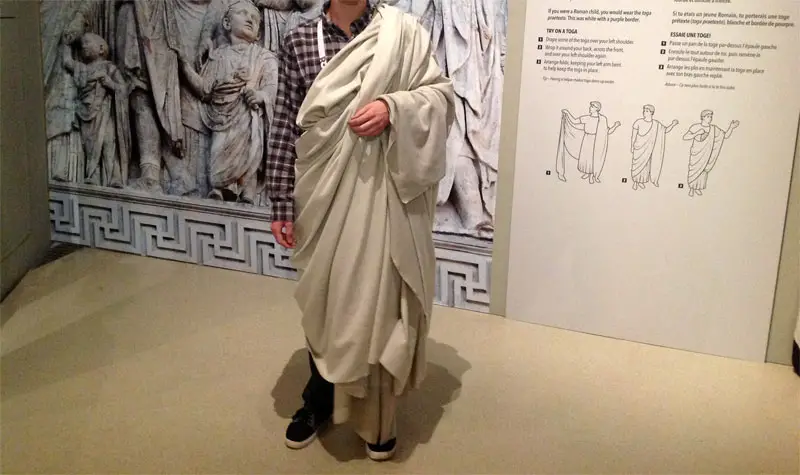
While modern frat parties often involve people wearing bedsheets to emulate a toga, these ancient wraps were originally semicircular in shape and could measure as long as 20 feet. They were draped over the shoulders, then wrapped around the body with a tunic worn underneath.
The woolen garment began its life as a practical and simple garment that could be worn by anyone and was associated with Romulus, the mythical founder of Rome. However, as time passed, togas became increasingly intricate and expensive.
Eventually, they had become so difficult to wear that only the elite would wear them for ceremonial purposes. Even these elites preferred more casual garments, and the toga fell completely out of Roman favor by the end of the empire.

